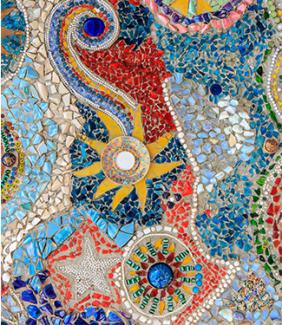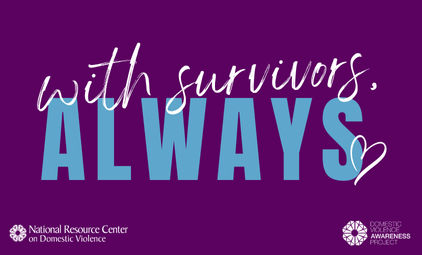Maria Jirau-Torres, MA
Language Access Coordinator
National Sexual Violence Resource Center
I grew up in a traditional Latino home. In my home, Familismo and Respeto were the norm. Even so, the topics of sex, sexual violence and healthy sexuality were taboo. We all knew the roles we had. The señoritas of the house had to abide by strict rules of modesty and sacrifice and the males could go out and be “men,” which meant they could explore the world, try new things and meet people. The females cooked, cleaned, ironed for the men and went to church. That life was positively reinforced by friends and other community members. The extended family reinforced the cultural values and supported one another. Sex was considered a sin, and it was disrespectful to talk about. Purity was the most revered characteristic.
How can we talk about sexual abuse when we can’t talk about sex? What does responsive, culturally-specific prevention look like? When working with diverse generations of different cultures? Following acculturation?
Prevention work looks so different across all cultures but efforts to respond to diverse communities and community needs are so few and far between. There are a handful of culturally-specific organizations doing this work, but its value and importance is not recognized or embraced. Add to that limited funding and being bound by what funders think is a reasonable focus of resources, and the challenge is obvious. Still, we adapt as we have historically done.
First and foremost, I was a counselor and resource for the community. I started by talking about issues that were close to the heart of my community: intimate partner violence, workplace harassment and support services, parenting classes, etc. Through my relationships, I was able to connect people to community resources they may never have known existed. How was I able to share resources and support? My approach was building from a relationship of new friend and community member. Walking into a room and starting a conventional training on sexual violence, statistics, objectives, interactive activities and summation was not going to work – that practice doesn’t work across diverse cultures. Instead, I went to the monthly Latin@/x organization meeting held in the local church basement. I would go out into the community to attend events, and speak with leaders by appointment or at community events until I met most of them and explained what I did and how it benefited the Latin@/x community. I didn’t talk about sexual violence or healthy sexuality until a relationship was established. My conversations went like this:
Me: Buenas. ¿Cómo estas Don Herman? It’s good to see you again. You look great. I love that guayabera. My dad had so many beautiful ones. Did you dress all fancy for me? (chuckle)
Don Herman: Hola Maria. Likewise. Gracias. Ah, sí. La guayabera. Your father was a man of class and distinction. How is your family Maria?
Me: They are well thank you Don Herman. This year they are making the Pasteles and I am only assisting. They are excited to have this to pass to their children.
Don Herman: That’s how our culture lives on verdad? How many do you make?
Me: Roughly 100. I will be sure to bring you some.
Don Herman: How wonderful! I love when you stop by.
Me: Thank you. I’m going to be participating in the fair next week and speaking on reporting harassment in the workplace for Latin@/x communities at St. Ann’s. It’s something that folks who are working in the resorts could benefit from.
Don Herman: Ah si. That is so good Maria. It is something that they will receive from you. Thank you for doing this.
Me: Of course! Everyone deserves to be safe and I am glad to do my part.
Once I established a relationship as a source of support and a respectful member of the community that spoke their language, I was able to work with people better. I wasn’t connected as the “counselor” that worked at that agency but as “Maria, la alta con los ojos claro” (the tall one with light eyes). Relationship building in the Latin@ community doesn’t happen on a professional level, but on a more personal one by sharing information about our families, our children – how many sons and daughters one has and whether they speak Spanish and observe traditions in the home, for example.
Another great relationship I built was with the local Manpower office (a career development organization). I was able to connect community members with resources for work or training for new careers. Building bridges with local organizations adds another layer of resources for community members to access. With this referral, for example, clients dealing with crises didn’t have to go through the process of meeting another stranger and building a new relationship and rapport.
Once you are accepted by the community, what do you bring to them? It is critical to be prepared with resources like small cards, brochures and materials that are written in a culturally responsive manner that can be understood by the community. It’s an unfortunate truth that responsive resources are few and far between. Many diverse professionals find themselves having to look at what exists in English and adapting them to meet their needs. Of course, responsible organizations must also work to build their capacity to provide services in a culturally appropriate manner as referenced within the materials.
Providing culturally responsive materials and resources still seems to be the burden of culturally specific organizations. I’m hopeful that will continue to grow and change. I envision organizations making the decision to truly end sexual violence and serve survivors by really considering what Language Access looks like for their community. That starts with creating relationships within their local communities, collaborating to create meaningful materials, and providing interpretation services as a part of their agency strategy.
My culture is about familismo – family and community. Starting a conversation about sexual violence prevention is possible. It may look different but in the end, you add to your familia and that is a beautiful and powerful thing. That’s what works for the Latin@ community. It’s the connection, the trust.
There are great resources out there full of information. Casa de Esperanza hosts webinars and blog talk radio programs that cover topics from skill building when working with Latin@/x communities to topics related to recent current events. The Washington Coalition of Sexual Assault Programs (WCSAP) offers resources and research information as well. I like a resource created by the Sexual Assault Resource and Counseling Center (SARCC) called Reaching Latino Victims of Sexual Violence: A Marketing Toolkit that has a great deal of helpful information. I would also encourage you to connect you with the National Latin@ Network for Healthy Families and Communities which has a variety of materials and infographics on their site from the No Mas Campaign.
The rest of what we need to support our community, we create. We have been adapting and creating our entire lives. We develop the materials we need when we can’t find it and then we share it in the name of serving our communities. ¡Para adelante!















